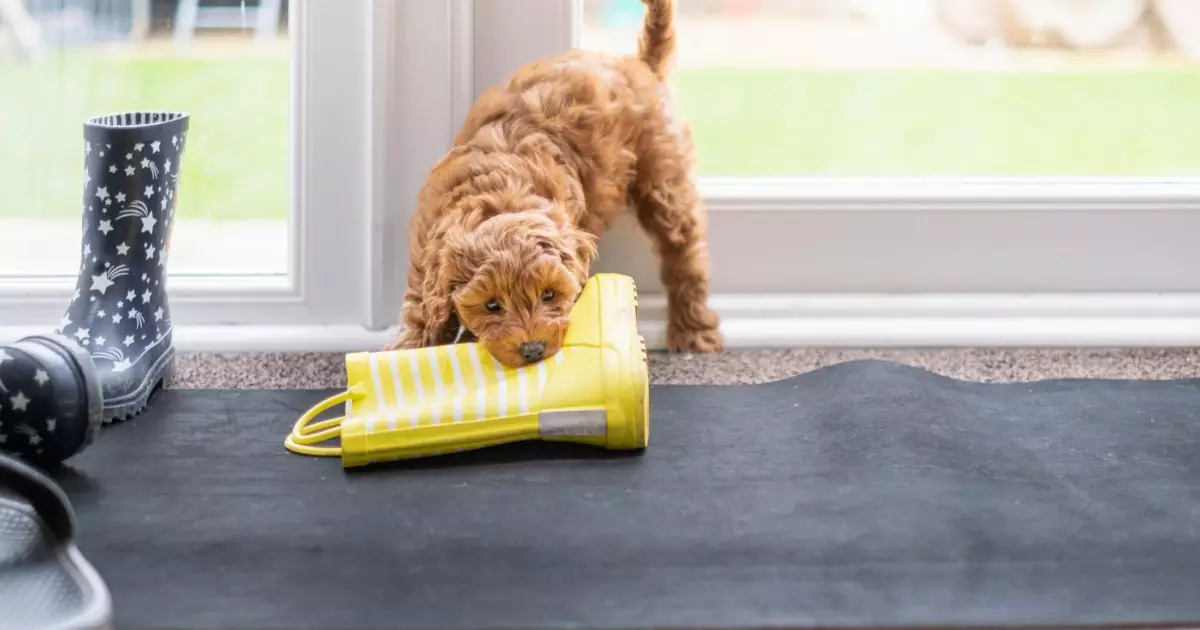Welcoming a new puppy into your home is a joyful occasion, but it also comes with its share of challenges—one of the most troublesome being the incessant chewing behavior. Just like human babies, puppies explore their surroundings primarily through their mouths. While their curiosity is completely natural, it’s crucial to guide them toward appropriate chewing habits to ensure their safety and to protect your belongings.
When you introduce a puppy into your life, the environment you once knew suddenly transforms. It’s no longer acceptable to leave everyday items casually lying around. Shoes, children’s toys, and half-eaten snacks are now potential chew toys for your curious pup. Therefore, making a proactive commitment to puppy-proof your living space is vital. This means establishing habits to restrict access to any potentially harmful or enticing items.
Creating a safe zone for your puppy may involve a detailed inspection of the areas within their reach. Before turning in for the night or leaving the house, conduct a thorough sweep to ensure that nothing hazardous is within their grasp. Pay special attention to items that may seem harmless but are actually toxic, such as chocolate, grapes, and certain plants. Additionally, consider closing doors to rooms that can present dangers or temptations.
While controlling access to what’s off-limits is essential, equally important is supplying your puppy with appropriate alternatives to chew on. To successfully redirect your puppy’s instinctual chewing urges, invest in a variety of appealing chew toys. Products like the classic Kong toy can be particularly effective. These rubber toys can be stuffed with treats or food, encouraging your puppy to focus on removing these goodies rather than gnawing on your belongings.
Interactive toys that dispense food when nudged can also channel your pup’s energy in a constructive way, which is beneficial not just for saving your shoes but also for providing mental stimulation. Similarly, varieties of chew treats, such as bully sticks, can satisfy their chewing instincts while keeping them occupied. The goal is to make these alternatives more enticing than whatever they might stumble upon in your home.
In addition to providing appropriate items to chew, it’s paramount to ensure that your puppy gets plenty of physical and mental exercise. Boredom can exacerbate destructive chewing habits. Regular walks, play sessions, and interactive games can help expend excess energy and maintain a balance in your puppy’s behavior.
Training plays a fundamental role in managing your puppy’s chewing tendencies. When you catch your puppy in the act of chewing something they shouldn’t, break their focus with a firm “Uh-uh!” then redirect their attention by calling them to you. After they respond, encourage them to perform a simple command, like “sit,” and reward them with an appropriate chew toy. This process not only helps break them of their bad habits but also enhances the bond between you and your puppy.
It’s important to approach puppy training with the understanding that chewing is a developmental stage most dogs go through. Just as toddlers outgrow certain behaviors, puppies will eventually cease their destructive chewing—provided that you remain consistent in your training and redirection techniques.
By engaging with your puppy thoughtfully, ensuring their environment is safe, providing appropriate alternatives, and consistently exercising and training them, you can significantly mitigate unwanted chewing behaviors. Remember, the journey of puppyhood is filled with learning—both for you and your furry friend. With time, patience, and effort, your puppy will grow from an innocent chewer into a well-mannered companion who understands boundaries.

